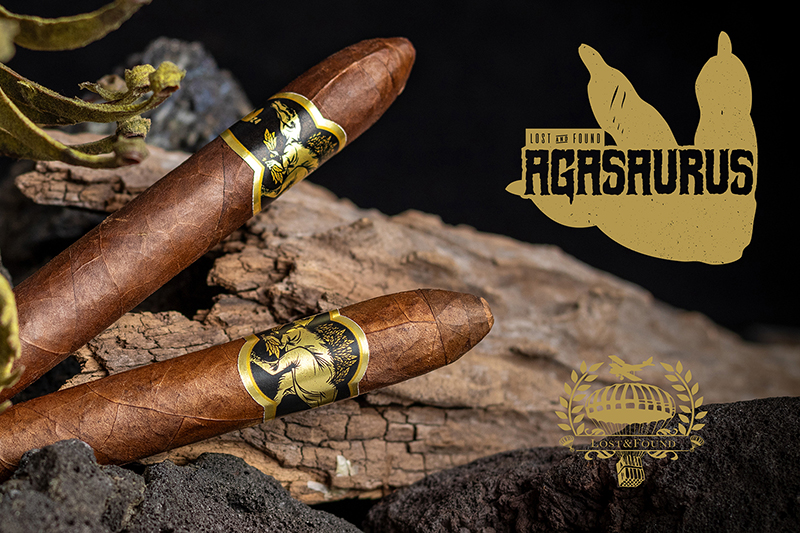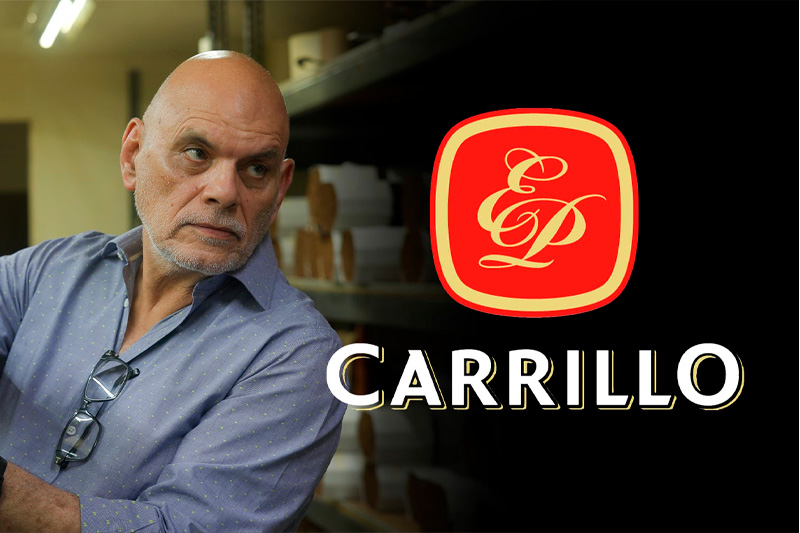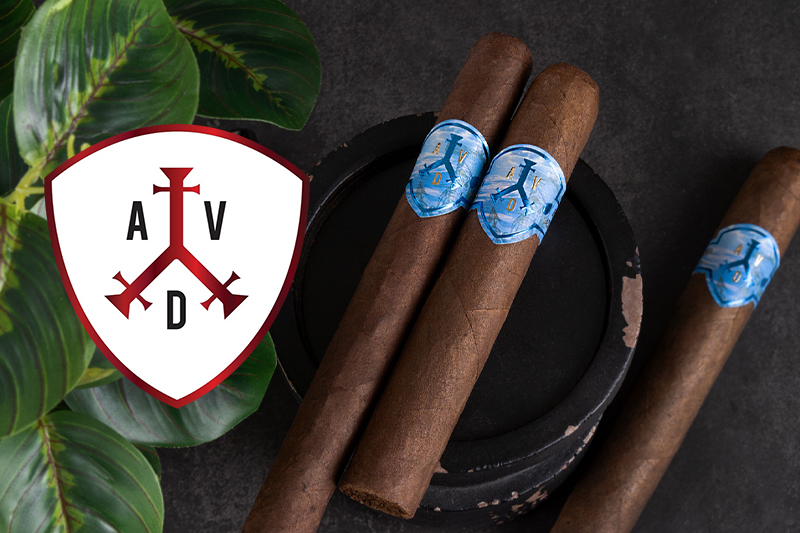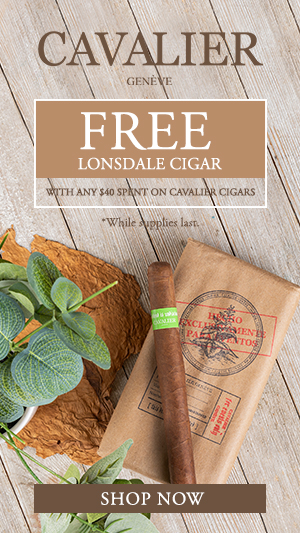Smoke Rings: Blackbird Factory
Note: The following transcription has been edited for clarity and brevity.
Irecently had the opportunity to speak with Jonas Santana of Blackbird Cigars about the brand's factory, their methods for production, and releases to come.
[Shane Ireland]: Hey everybody, I'm Shane Ireland. I'm here on location at the brand new Blackbird Cigar Factory with mi hermano, Jonas Santana.
[Jonas Santana]: What's up, Shane? Good to see you, man. It's been a little while.
[SI]: Before we get into the details, I will say this is for sure the most beautiful cigar factory I've ever seen. It's incredible. So why don't you tell us a little bit about how you got from the beginning of the company to where you are now?
[JS]: In short, working like crazy. Team effort, I believe, is the true essence. Everybody plays a role here. My brother, the master blender, Vlad, who is an administrator here, put everything together. I'm the guy who always takes the flights to chat about the brand. I'm the pilot guy.
First, you need your mindset to be set right on what you want to achieve. What do I want? What do I want to respect as far as the cigar craft goes? Blackbird is very modern, but no matter how great the marketing is, the level of craftsmanship has to be the main focus.
When you respect the craft, you respect the customer, the consumer, and everybody around it. So I believe, because of that, it really helped. And, of course, investment, but there's no investment without risk. If you don't take the risk, nothing will change.
[SI]: That's true. So when you talk about the craft specifically, can you tell us a few things about your approach here that is different or that goes maybe the extra mile compared to what's typical for the industry?
[JS]: I believe in this case, we haven't remade the wheel, but we go the extra mile. So every tobacco that we get, no matter if we grow it or we get it from a source, we like to do the process again until we get our own signature. I think I was explaining that to you, but when you say the process, you mean fermenting, curing, sorting, pilóns, and all the processes.
While making premium cigars, we don't allow the rollers to do more than 350 cigars daily because we don't want them to be fatigued in the hands. We will always try to get the right precision. Working with Mother Nature and human beings, you must be true to yourself and not overwork your employees. For context, a daily quota for one pair is no more than 350, which is significantly less than the industry standard.
[SI]: A lot of times, these pairs of rollers at other factories are incentivized to overproduce, and they're paid by how much they produce. So how do you create the incentives to keep these guys striving for the right quality when they have such a low demand?
[JS]: Well, so in this case, the cigars that we don't use we call mono, which means monkey in English, but it doesn't make any sense. So, in our case, it's the less mono they have reflects the bonus they get at the end of the week. Their bonuses are based on making every cigar with the same love. Every single stick. So that's how we keep the motivation, and we pay them like they do 500 cigars with 350.
[SI]: That's fantastic. What about pre-production? We saw a lot of beautiful tobacco and raw components. How do you reach a point where you know the tobacco is ready for production? Is there a standard or is it just however long it takes?
[JS]: However long it takes. Some leaves take longer than the other ones. In the case of Papo, who is the master blender, when we make the cigars, he probably is trying 22 cigars until he reaches the right blend. Sometimes we do one single type of cigar to see how much it's burning. Everything is based on feeling, taste, and our palates.
[SI]: Wow. Are there any types of tobacco or any materials that are new to you guys or that you're excited about using going forward?
[JS]: What we're using right now that is new is the Arapiraca. We have a couple of packets, not too many, but we want to make one of our short runs with that. As for tobacco, I think the Tripa tobacco we're using with the Carbonell family is the newest. They're a family in the Dominican Republic that created that seed. Outside of that, we use the common stuff. But the way we age tobacco, fermented tobacco, is not very common. We always go the extra mile.
[SI]: Absolutely. You spoke a little bit about some of the crop year stuff that comes from the farms that you guys are working directly with now.
[JS]: This is relatively new. We started that two years ago. We grow tobacco in Jalapa and in Condega, Nicaragua. We grow in San Andrés, Mexico, and we grow in Mao in the Dominican Republic. So there are three areas where we grow our own tobacco. It takes a long time. It can probably take two to three years of fermenting before we can use it. And then we let it rest depending on the cigar.
[SI]: Fantastic. The natural approach to the processing of tobacco is interesting to me as well, which I noticed while we were touring the factory: chemical-free, only water, only temperature and humidity control, and multiple aging rooms.
[JS]: Exactly. There's no chemical there. We're working with Maduro tobacco. We use wine instead of other chemicals, and we use heat and humidity to get that coloring to the right shade. Everything is natural. We don't like to mess around.
[SI]: I have to say that sounds expensive.
[JS]: It is. And time-consuming. But that's the way it goes. There are a lot of wonderful cigars out there, but the only way that you can set yourself apart is by going the extra mile and doing a couple of different things, like when you saw the plastic in the pilón.
[SI]: Yeah. You don't see that. I've never seen that before. What is the purpose of that, by the way? We probably have some shots of that, but we saw some smaller-size pilóns that were completely wrapped and closed together. So what is the benefit of this?
[JS]: You keep the heat inside. For example, in the mulling room, depending on where you want to keep the heat, it will do a different chemical reaction on its own. So that's something that's new that we've been working on for the last two months.
[SI]: I would also imagine that in addition to keeping the heat more consistent, you're also keeping some of the oil aroma character of the tobacco from escaping.
[JS]: That's something else. You cannot overdo something because you always need those minerals and those oils in the tobacco. When you do too much, you can lose some of the essence of the tobacco. So you gotta be careful with that. That's why you always have to try and check the temperature all the time.
[SI]: One of the pilóns out there that we came across was being turned when we were taking the tour. And I asked how often it had been turned and when it was finished. I think the answer was that it had been turned three or four times so far and that it could be maybe up to a year of turning before being finished.
[JS]: He said that it would be around a year and a half before we can start working on that particular one.
[SI]: That is an excessive amount of time, but I'm excited to taste it when it's ready. For those out there who are new to your cigars, where would you recommend somebody starts within your portfolio?
[JS]: I would recommend starting with the Finch, which has a Sumatra wrapper. It's less than medium; it's quite mild, with no aftertaste. There are hints of white pepper, and that's it. Or you can start with Connecticut.
[SI]: What about you? These days, what do you smoke the most often from your blends?
[JS]: From my blends? I do a lot of the Unkind, the Superb, and the Crow. After we moved to this factory, what we did is we perfected every single blend. Now every single blend has the same essence, but you don't have that big punch. It's more balanced and round. There's more harmony. So I can enjoy the Crow more because I'm not a big fan of too much pepper. This factory has really helped us to balance our blends. When you're doing something in medium to full, and you didn't balance it out, you're not going to appreciate the flavors. If you overload it with ligero, you're going to have a problem. So balance is very important and complexity, which I think the market right now, the consumers are more educated than before. They just go to Google, research any cigar, review or whatever, and they're gonna have a perception of it before they ever try it. They already have something in mind that they might get from there.
[SI]: Is there anything you guys are working on right now, whether it's something you want to give a lot of details about or not, but do you guys have any new projects that we can expect this year for your line?
[JS]: As far as Blackbird, Cactus Wren is going to get out in a couple of weeks. The Crow Box Press is coming soon, and we're going to try to launch our first cigar that's going to be over $20 before tax. We're smoking one of them here now.
[SI]: This is fantastic. I'm excited to hear the name and to see the packaging. It's super rich, with no bitterness.
[JS]: That's a double Connecticut, both binder and wrapper. But the way we did it over there, through the mulling room process, it made the right Connecticut for me.
[SI]: It's extremely rich. From the first light, it was, I would say, one of the more flavorful Connecticuts I've had in a long time. Is there anything else about the brand that you want the smokers out there to know about the brand?
[JS]: Nobody can clip our wings. I'm still here.
[SI]: Thank you so much, man. See you guys.
[JS]: Thank you so much.












Comments
Awesome read! Blackbird Factory is doing something really unique with smoke rings. It's great to see creativity and craftsmanship coming together like this!